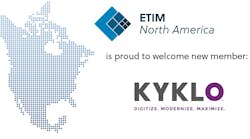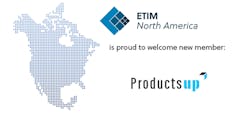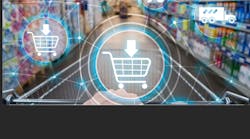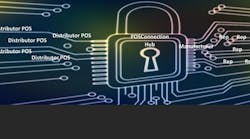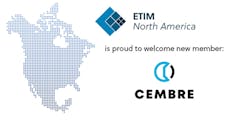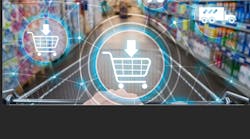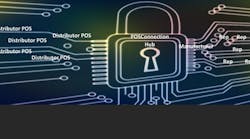The distribution industry has changed a great deal over the past several years. Generational issues have led to consolidation. The web has forever changed information sourcing and is revolutionizing the purchasing function. Millennials are joining the distribution industry, margin erosion is continuing and customers want a higher level of service.
The supply chain is becoming more complex, creating the need for increased communication, collaboration and consistency of information while maintaining flexibility to adjust processes. Managing this complexity is vital to ensuring long-term success.
Today’s best-in-class distributors have recognized the changing market and are proactively investing to control their future. They’re redesigning processes, investing in technology, training staff, introducing new services, deploying omni-channel strategies and repositioning themselves as solution providers. We have conducted research on successful distributors and found the following five attributes are critical for distributors to possess if they want to remain market leaders.
1. An ability to grow consistently in a challenging marketplace. To continue growing, distributors must overcome financial and organizational factors such as financial constraints, capital or cash flow limitations, complacency, risk aversion, inherently complex partnerships, limited customer insight and internal systems that cannot integrate easily with external data sources.
These distributors capitalize on growth opportunities by utilizing technology, people and processes as a platform for driving revenue and profitability. They develop an organizational strategy to support growth while leveraging technology to reduce costs, improve customer service, and capitalize on market changes.
2. Using ERP systems to gain insight into business problems and opportunities. Many ERP systems are long on data and short on information. If an ERP system doesn’t produce actionable information, it leads to trouble. For example, a distributor might not be able to identify a problem before it becomes a disaster or a market opportunity before it grows stale.
Some common problems with ERP systems that don’t provide enough actionable information to distributors include inaccessible data stored in multiple systems, unorganized data, data that does not support decision making, competing IT priorities, and organizational cultures that do not embrace accountability. Best-in-class distributors effectively combine internal and external data to develop insight that helps them make wise business decisions and sustain better supply chain relationships, ultimately generating competitive advantages.
A digital business transformation is underway, and market-leading distributors recognize they need to be competent in developing key performance indicators (KPIs) and metrics for everyone in the organization; improving pricing for increased sales or margins; identifying procurement opportunities that result in lower costs or reduce lead times; and developing cost-to-serve metrics.
3. Ability to harness ERP system as an effective and flexible tool to solve unique challenges. Managing increased throughput with the same resource investment is a challenge for many distributors. It can lead to problems such as systems that are difficult to use, incompatible, or require a disproportionate amount of IT support; issues with communication, visibility and collaboration that inhibit access to information; and team members circumventing cumbersome procedures and processes. Managers often aren’t aware of the hidden costs of an ineffective system with these problems.
Modern distributors operate their businesses by using flexible software solutions that support current and future end-to-end distribution processes. These ERP solutions minimize costs, increase profitability, maximize customer satisfaction and reduce lead times to customers. Some of the newer ERP systems are also attractive to employees who want to work in a contemporary, future-proofed computer environment.
4. Responsive to change. These distributors use technology as an asset to manage, respond to and anticipate change and empower their teams to make rapid, fact-based decisions. They use it to overcome obstacles such as an inability to access necessary information; inflexible software that does not support business processes or is difficult to use; and workarounds, manual activities or side systems necessary to supplement ineffective software.
5. Ability to collaborative with supply chain partners. Effective collaboration across the supply chain presents numerous challenges due to data inconsistency, system compatibility, interpersonal misconnects and other issues. Even the most progressive distributors are sometimes unable to manage the necessary level of communication and collaboration with capabilities because they don’t always have an ERP loaded with the following tools:
- Sales collaboration portals for remote access to information for the sales organization and customers;
- Web stores and portals that allow customers to securely enter, review or update orders and delivery requirements;
- Supply chain efficiency initiatives such as robust usage of EDI and VMI (vendor-managed inventory);
- Effective management of customer storerooms, jobsite trailers and consigned inventory;
- Interactive communication such as instant text, voice, and video messaging, secure and easily searchable document storage, a knowledge base and ongoing team communications about products or projects.
Best-in-class distributors use the tools mentioned above to collaborate be more responsive to customer needs. Regardless of location, they can answer customer inquiries and access accurate information without delay. Their ERP systems support new value-add processes to enhance competitiveness and can result in increased sales. We are finding that some emerging technologies can transform and support expanded collaboration and provide solutions for supply chain partners that seek self-service options to manage transactional, repetitive interactions that can support, enhance and build relationships.
Summary. Tomorrow’s distribution leaders are capitalizing on today’s opportunities. They are investing in their systems so they have platforms that can support accelerated growth. These distributors know they need to collaborate and communicate across their supply chain to support today’s omni-channel environment while leveraging technologies to gain efficiencies, drive new services and gain insights that will power profits.
AUTHOR BIO
The author is vice president of industry solutions for I.B.I.S. Inc., Peachtree Corners, Ga., a value added reseller (VAR) that has provided hundreds of distributors and manufacturers with Microsoft solutions including CRM, ERP and business intelligence.
Telaro has experience in manufacturing and distribution from shop floor and warehousing positions to management, as well as experience in consulting, product management, product development and software sales. You can reach him at [email protected] / phone: 770-903-3327 / www.ibisinc.com
